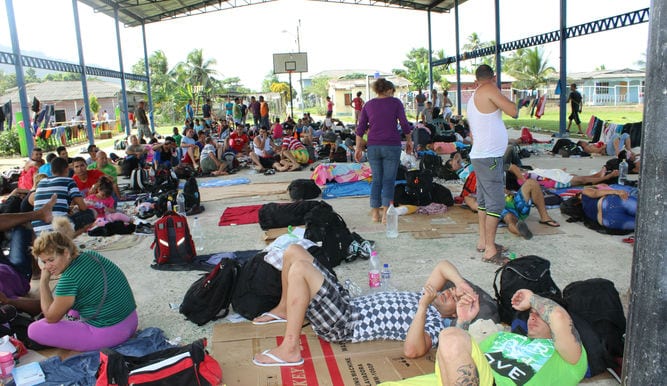Wet-foot/ Dry-foot Policy: Changing Mentalities
By Jesus Arboleya (Progreso Semanal)

HAVANA TIMES — Less than a week before the end of his eight year presidency, former US president Barack Obama decided to revoke the “wet-foot/ dry-foot” policy and signed an immigration agreement with the Cuban government to this end.
Adopted in 1999 during Bill Clinton’s administration, this policy established the contradiction of authorizing illegal Cuban immigrants to remain in the United States, if the latter were able to step foot on US soil, although they were deported back to Cuba if they were caught at sea.
In reality, this was nothing new, maybe just a more limited version of the policy introduced ever since 1959, when the United States had committed itself to change after signing the immigration agreements in 1994.
Thanks to the “wet-foot/ dry-foot” policy, it’s estimated that around 135,000 undocumented Cuban immigrants arrived in the United States over the last decade. About 110,000 crossed over on the US border with Mexico and Canada (mainly the former), another 15,000 managed to land on US territory by crossing over on rafts and boats and the figure is completed with the approximately 10,000 Cubans who arrived with temporary visas and decided to stay on in the US.
According to the US Department of Customs and Border Protection, since January 14 when the new agreement was made public entrance to the US has been denied to 426 Cubans and another 172 have been arrested at the border, of whom 2 have been deported. There have only been 8 interceptions at sea.
It goes without saying that the new US government is complying with what has been set out in the agreements signed by his predecessor and that there is some kind of bilateral effort to put the procedures which this implies into gear.
Even though it is still very early to draw conclusions, an immediate effect has been the significant reduction in the flow of Cuban immigrants, which is really positive when you take into consideration tackling illegal human trafficking and other related crimes.
Hundreds of Cuban emigres have been left stuck in different Latin American countries, ever since it was announced that they wouldn’t be able to enter the United States by default. Some of these have been deported back to Cuba and others are expecting it to define their status in these countries. In order to regulate these processes, Cuba has signed immigration agreements with Mexico, the Bahamas, the Cayman Islands, the Dominican Republic, Ecuador and Jamaica, Panama, and continues to negotiate with other Latin American countries.
That doesn’t mean that Cuban emigres without a US visa won’t continue to try and settle, however they can, in the neighboring country, as is the case with people from everywhere else. The figure of “illegal immigrant”, which has practically been unheard of among the Cuban people up until now, and their possible deportation back to the island, is now a reality which Cuban immigration laws now have to deal with, and its inevitable social, domestic impact.
Cuba’s national situation, as well as the way Cubans are treated by the United States, will influence the volume this phenomenon will have. The attitude which US courts will take when dealing with Cubans who seek asylum after reaching US soil still isn’t clear, nor whether Cubans who arrive in this country with temporary visas and then decide to stay after they expire will be able to find shelter in the Cuban Adjustment Act when the established year has passed, even though that might include some months of staying in the US illegally.
Regardless, revoking the “wet-foot/dry-foot” policy has been an important, maybe decisive, step in normalizing Cuba-US immigration relations, which has had an impact on all of the region and surely on the rest of the world. This works in favor of Cuba’s international relations.
For some, this is the closing of one of the escape valves that the Cuban government has from building economic tension which Cuba society is experiencing and they predict that this will translate into domestic political conflicts. Nevertheless, the opportunity Cubans have to emigrate hasn’t been completely wiped out with this measure, but it does ensure that this will take place in a legal, orderly and safe way, which will contribute to order in Cuba and facilitate the treatment Cuban immigrants.
We are witnessing a new scenario in Cuban immigration and the main lesson here is that it can’t be understood with old ideas, nor tackled with old methods. Once again, it’s a question of “changing mentalities”. That is Cuban society’s main challenge today.





